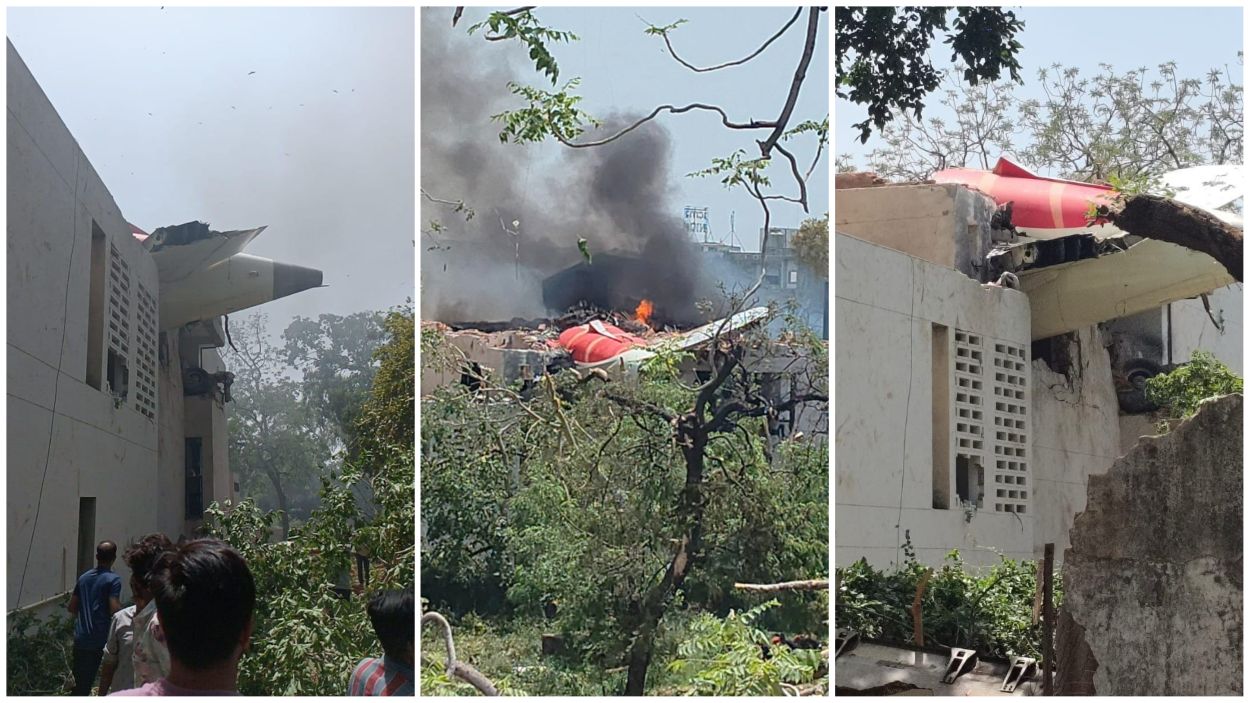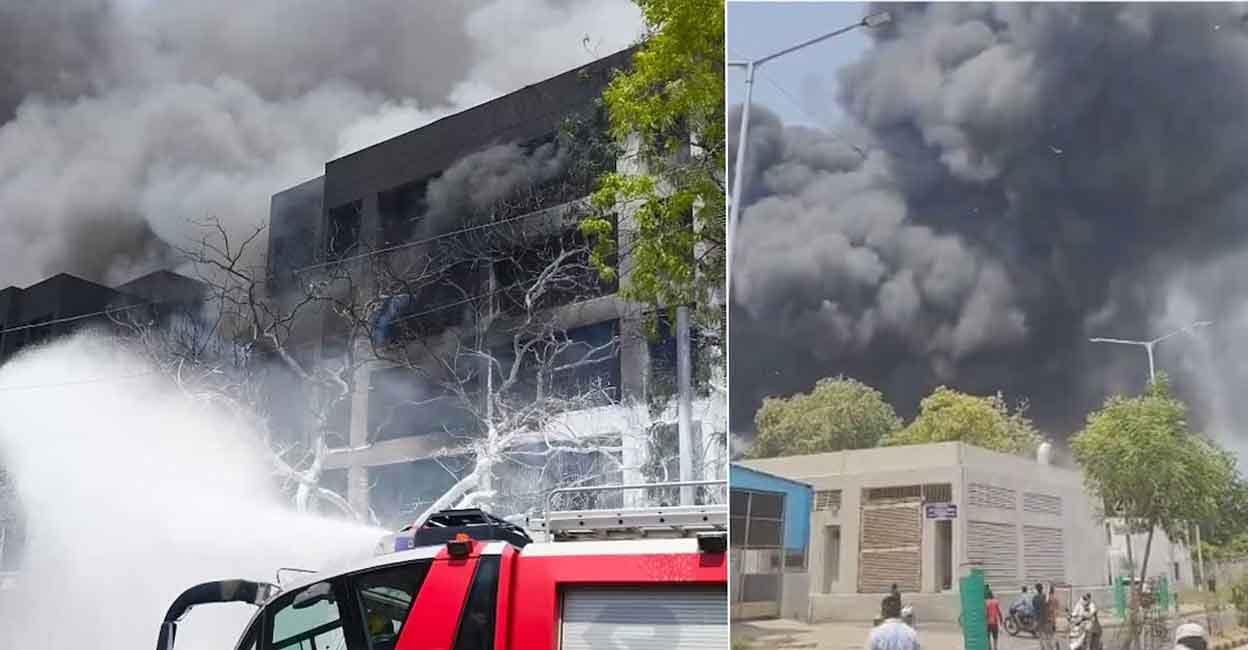Air India AI 171 Crash: Pilots Sent “Mayday” Call Before Tragic Silence
Air India AI 171 Crash: Pilots Sent “Mayday” Call Before Tragic Silence
NEW DELHI: In a devastating turn of events, Air India’s London-bound AI 171 flight crashed shortly after takeoff from Gujarat’s Sardar Vallabhbhai Patel International Airport on June 12, 2025. The tragedy unfolded in mere minutes, plunging hundreds of families into anguish and sending shockwaves across India’s aviation sector.
According to an official statement from the Directorate General of Civil Aviation (DGCA), the pilots of the Boeing 787-8 Dreamliner issued a “Mayday” distress call, signaling a grave emergency onboard. This call, internationally recognized as a plea for immediate assistance during life-threatening situations, was the last communication from the aircraft. Following the distress transmission, all contact was lost. Shockingly, the aircraft reportedly received no response from Air Traffic Control (ATC) before radio silence ensued.
The aircraft, bearing flight number AI 171, took off from runway 23 at approximately 1:39 pm, destined for London Gatwick Airport. Onboard were 242 individuals—comprised of two pilots, 10 cabin crew members, and 230 passengers. Their journey, which was meant to connect Ahmedabad with the United Kingdom, ended in unspeakable tragedy.
A chilling 17-second video captured by bystanders in the vicinity revealed the harrowing final moments of the aircraft. The footage shows the plane descending rapidly into a densely populated residential area, with plumes of thick, black smoke engulfing the scene. The visuals of the crash site have since gone viral, offering a grim testimony to the scale of the disaster.
Air India issued an official statement on social media platform X (formerly Twitter), acknowledging the incident and urging the public to follow their official handles and website for further updates. “Flight AI171, operating Ahmedabad-London Gatwick, was involved in an incident today, 12 June 2025. At this moment, we are ascertaining the details and will share further updates at the earliest on http://airindia.com and on our X handle,” the post read.
Even as official details slowly began to emerge, disturbing images from the crash site started flooding news portals and social media platforms. The charred remains of the Dreamliner could be seen strewn across residential buildings, with rescue workers frantically attempting to control the fires and assist survivors. Initial visuals indicated significant damage to the surrounding neighborhood, raising fears of casualties not only among the passengers but also among local residents.
As per the Civil Aviation Ministry, the Air India flight was tragically involved in what is being termed one of the worst aviation disasters in recent Indian history. Union Civil Aviation Minister Ram Mohan Naidu Kinjarapu addressed the nation through an urgent statement. He confirmed that he is personally monitoring the situation and has directed all aviation, emergency response, and disaster management agencies to operate in swift coordination.
“We are fully mobilized and working in close coordination with Air India, DGCA, National Disaster Response Force (NDRF), state emergency services, and medical teams,” Minister Naidu emphasized. “Our priority is to ascertain the number of survivors, ensure that the injured receive immediate medical attention, and provide support to the bereaved families.”
Despite the quick response, challenges persist. The dense residential locality where the aircraft went down has made rescue efforts particularly arduous. Firefighters battled towering flames while medical personnel established emergency triage stations nearby. The National Disaster Response Force swiftly cordoned off the crash site, preventing unauthorized access and facilitating unhindered operations.

Air India, still reeling from the unfolding tragedy, is facing scrutiny regarding maintenance records and pilot training protocols. Aviation safety experts have raised urgent questions about possible technical malfunctions or human error contributing to the crash, although the DGCA has maintained that it is premature to speculate before a comprehensive investigation is completed.
The aircraft involved was a Boeing 787-8 Dreamliner, a model generally regarded for its fuel efficiency and advanced safety features. This makes the sudden failure and resultant crash even more alarming. Aviation analysts have pointed to the need for a meticulous investigation not only into potential mechanical failures but also the role of ATC in the critical moments following the “Mayday” call.
In the aftermath, relatives of those aboard AI 171 gathered at Ahmedabad airport and London Gatwick, desperate for any information. Tearful scenes unfolded as families clung to hope amid the agonizing uncertainty.
Prime Minister Narendra Modi expressed his deep sorrow, extending condolences to the bereaved families and affirming that the government would spare no effort in providing relief. “This is a dark day for our nation,” Modi stated. “All necessary measures are being taken, and we stand with the affected families in their time of grief.”
Meanwhile, the black box—comprising the cockpit voice recorder (CVR) and flight data recorder (FDR)—is being sought amidst the wreckage. The data contained in these critical devices will be pivotal in understanding the final minutes of the ill-fated flight and determining whether mechanical, operational, or procedural failures were involved.
Aviation experts globally are watching closely as India’s aviation safety mechanisms are tested by this catastrophe. Air India, now under Tata Group ownership, has been under increased scrutiny as it undergoes efforts to revamp operations and modernize its fleet.
As evening fell over Ahmedabad, emergency crews continued to work under difficult conditions, while grief enveloped the nation. The Indian aviation fraternity, international partners, and the global community have all extended solidarity, emphasizing the universal weight of such tragedies in modern air travel.

The DGCA has promised an impartial and thorough investigation, in cooperation with international aviation bodies including Boeing and global safety regulators. Survivors, if any, will be provided full medical and psychological support, while families of the deceased will be extended compensation and counseling services.
In the coming days, focus will turn to the technical inquiry, survivor accounts, if available, and the formulation of policy responses to prevent such catastrophes in the future. The tragedy of Air India AI 171 serves as a solemn reminder of the ever-present risks in aviation, despite the remarkable advancements in technology and safety protocols.
With the investigation underway and updates still emerging, the nation waits in collective sorrow and prayer for answers, for accountability, and most importantly, for the healing of those who have suffered unspeakable loss.
Disclaimer: This report is based on preliminary information and developments as of June 12, 2025. As the situation evolves, further verified updates from official authorities and investigation teams will provide a clearer picture of the causes and consequences of the Air India AI 171 crash.









